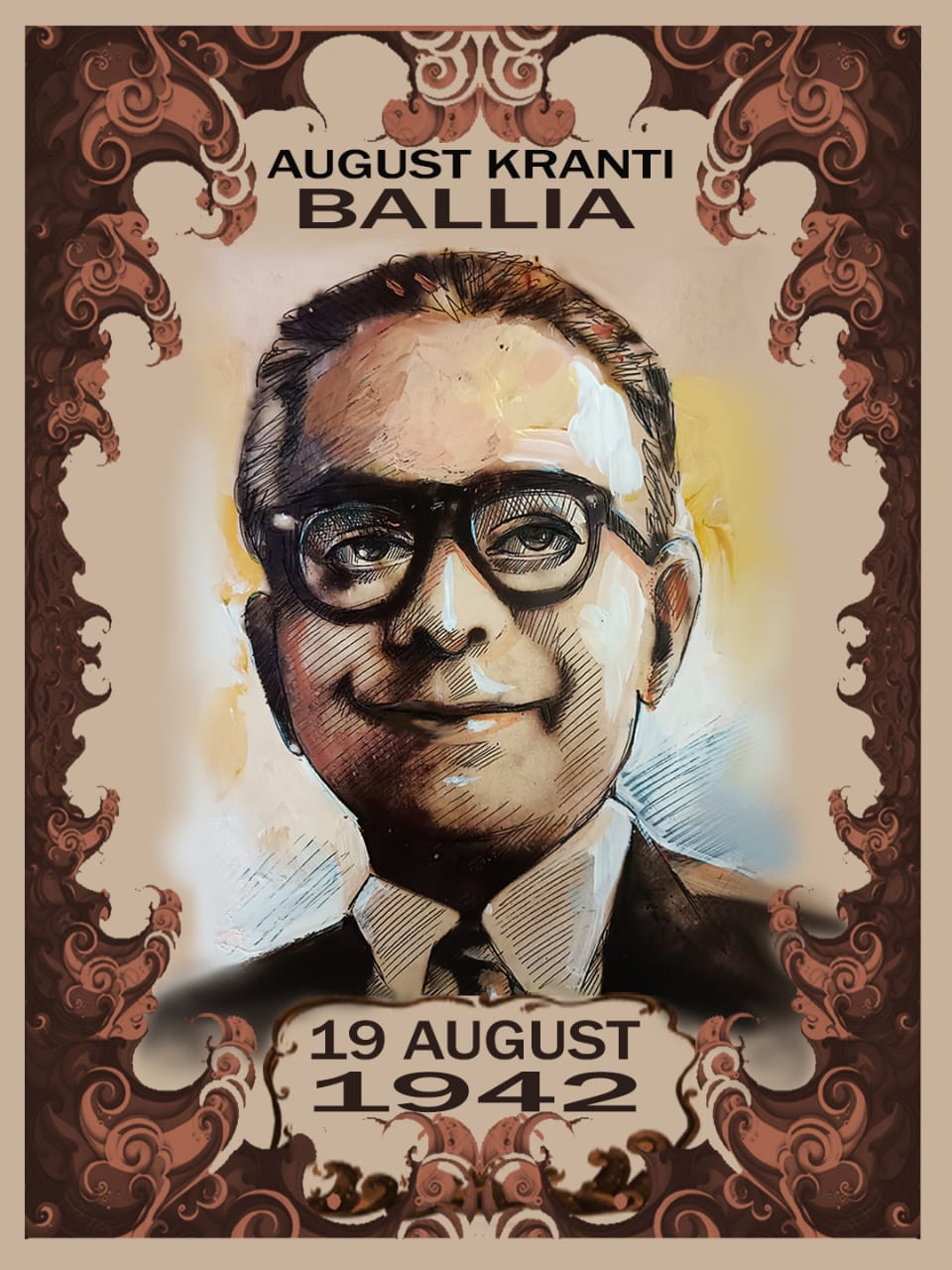CHITTU PANDEY
A significant feature of the Quit India Movement of 1942 was the pre-emptive arrest of Gandhiji and the top leadership of the Congress, which left the people of India to take the movement forward. With Gandhi's mantra of 'Do or Die' as a driving force, local leaders tried to raise the flag of India on government buildings and many were shot dead. Chittu Pandey, the head of the District Congress Committee of Ballia in east Uttar Pradesh, was able to perform this heroic deed because of Jagdishwar Nigam, an Indian who was an officer of the British Indian Civil Service. Mr. Nigam was the then District Magistrate of Ballia and had planned to transfer the power to Indians and end the bloodshed.
When the news of the arrest of Congress leaders reached Ballia on 9th August, all schools and shops were closed, and people came on the streets singing patriotic songs. There were a few sporadic incidents where the local people attacked symbols of the British authority, such as the Bilthara Road railway station, the Rasra treasury, the water pump, the water tank, police stations, post offices, communication lines and shops selling foreign cloth. A goods train was looted and the tahsil headquarters located in Bansdih was overtaken. The Deputy Magistrate, Mr Kakkar, disobeyed orders and opened fire killing almost 25 people.
The District Magistrate and Collector, Mr. Jagdishwar Nigam, an ICS (Indian Civil Service) officer of strong nationalist leanings, understood the sensitivity of the situation and arrested political leaders, including Chittu Pandey, as per the orders of the British government. However, on 19th August, 1942 Mr. Nigam issued the orders to unconditionally release Chittu Pandey. The pages of history show that it was a well planned strategy. Mr. Nigam and the Superintendent of Police, Riaz Ahmed Khan, escorted Chittu Pandey to the Collectorate. Mr. Nigam took down the British flag with full honours, and allowed Chittu Pandey to raise the first flag of India on the Collectorate. He then transferred the power to rule to Chittu Pandey. Thus, in the tumultuous period of Quit India on 19th August 1942, the transfer of power took place by a British Administrator to the local people of Ballia. Chittu Pandey was declared as the Head of the Government. The flag of India flew freely in the air without any bloodshed and Ballia became a short lived Republic. Slogans praising ‘Nationalist Nigam’ and Chittu Pandey echoed in the air to the accompaniment of patriotic songs.
The 40,000, people that had converged at Ballia, became eyewitness to this historic event. They were aware that Mr. Nigam the District Magistrate and Collector had given orders to the Police to lay down their arms and “deposit their guns”, in clear defiance of the 'shoot at sight' order of the British government.
The parallel government led by Chittu Pandey made arrangements for carrying out the civil administration. Separate panchayats were set up for different localities. Congress workers were appointed for the defence of the city. This government came to control seven out of the ten police station areas. However, this government did not last long. Mr. Nigam, aware that the British Military troops would march in to Ballia to “recapture Ballia”, ensured that Chittu Pandey and his colleagues went underground.
During the intervening night of 22–23 August, British military forces entered Ballia and overthrew the popular government. What followed was a story of brutal suppression by the British military, arrests, fines and long jail terms for the leaders. Mr. Nigam stood by his Nationalist stance and had to face dismissal from service as he refused to resign. He was reinstated in 1948 after he won a long legal battle.
One can gauge the extent to which the British control had been wiped out of Ballia from the telegram sent by the British officer in charge to the Governor of United Provinces, Maurice Hallett, which read - 'Ballia Reconquered'. The saga of the brave deeds and the sacrifice of the people earned Ballia the epithet 'Revolutionary Ballia'. Chittu Pandey went down in history as the 'Tiger of Ballia', while the District Magistrate, Mr. Jagdishwar Nigam, came to be known as ‘Nationalist Nigam’, who in his own words had shown ‘the power of the pen over the sword’.
- Portions of this story have been sourced from the book “The Real Story: The Administrator Jagdishwar Nigam (I.C.S) vs The British Raj 19th August 1942” by Mrs. Sheila Darbari, Dr. Janice Darbari and Dr. Raj Darbari
 Government of India
Government of India




 Recognizing the ongoing need to position itself for the digital future, Indian Culture is an initiative by the Ministry of Culture. A platform that hosts data of cultural relevance from various repositories and institutions all over India.
Recognizing the ongoing need to position itself for the digital future, Indian Culture is an initiative by the Ministry of Culture. A platform that hosts data of cultural relevance from various repositories and institutions all over India.

